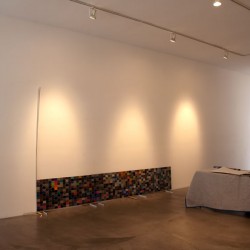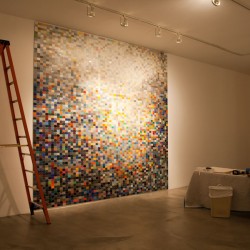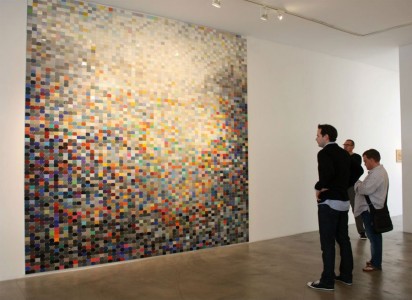Self-tracking dashboard....handbuilt
/ Very soon, all the data about us will be easily and invisibly tracked via sensors in our clothes, and little patches we stick on our skin. But then WHAT? You've got to have a way to extrapolate, summarize, compare and deliver a quick portrait of how you're doing and what it means. I think pattern is the answer. And physical texture (hello 3D printers!) will be the way to produce little art objects quickly, easily, disposably.
This 12in x 12in has a moodjam chart, pointcare plot of heart rate variability, 8 nights of REM and deep sleep and daily upset stomach scores. Encoded in a language that you begin to read and understand.
Very soon, all the data about us will be easily and invisibly tracked via sensors in our clothes, and little patches we stick on our skin. But then WHAT? You've got to have a way to extrapolate, summarize, compare and deliver a quick portrait of how you're doing and what it means. I think pattern is the answer. And physical texture (hello 3D printers!) will be the way to produce little art objects quickly, easily, disposably.
This 12in x 12in has a moodjam chart, pointcare plot of heart rate variability, 8 nights of REM and deep sleep and daily upset stomach scores. Encoded in a language that you begin to read and understand.









